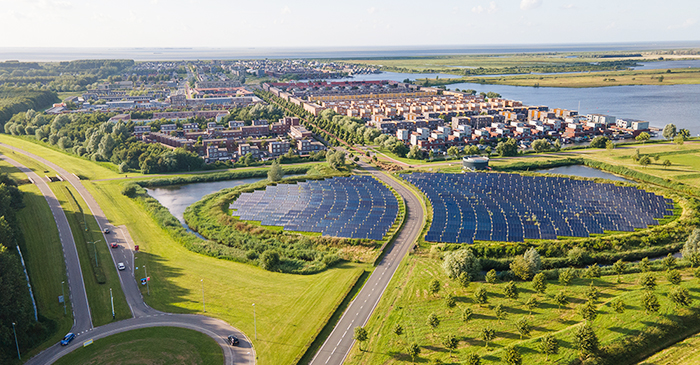Energy storage technology helps photovoltaic (PV) projects reduce electricity curtailment and ensures large-scale grid integration of PV systems. Among the currently mature and commercialized energy storage technologies, electrochemical energy storage is suitable for integration with PV projects due to its advantages of being unaffected by natural conditions, fast response, and long cycle life.
I. Photovoltaic System
Photovoltaic power generation, also known as solar photovoltaic power generation, is a technology that converts light energy into electrical energy using the photoelectric effect at the semiconductor interface. It mainly consists of three parts: solar panels (PV modules), controllers, and inverters.
Photovoltaic power stations can be roughly divided into two categories based on the arrangement of components: centralized PV power stations and distributed PV power stations.

Centralized PV Power Stations: These are large-scale PV power stations built in vast areas such as deserts, with the generated electricity directly integrated into the public grid and connected to the high-voltage transmission system to supply distant loads. They are commonly found in regions like Qinghai, Ningxia, Gansu, and Xinjiang.

Distributed PV Power Stations: These are built and operated on or near the user’s premises, primarily for self-consumption with any excess electricity fed into the grid. They typically utilize rooftops, carports, and other dispersed areas to build PV power stations and are common in South and North China. The development of distributed PV once faced challenges due to being included in scale management. However, it became a hot topic in the industry due to the “whole county distributed pilot” policy.
II. Integration Methods of Energy Storage Systems
PV power stations can adopt two technical approaches: AC-side centralized integration and DC-side distributed integration.
AC-side Centralized Integration:
In this approach, the energy storage battery pack is centrally placed at the power station’s booster station/switch station. The DC power is inverted and boosted before being connected to the booster station’s AC bus, with power exchanges between the energy storage system and the power system being controlled by dispatch. This method requires configuring multiple PCS (Power Conversion Systems) for parallel operation and adding booster transformers and distribution devices.
DC-side Distributed Integration:
This method distributes energy storage units across various PV sub-arrays, with each sub-array equipped with its own energy storage device, mainly consisting of a PV inverter, booster transformer, DC/DC module, and storage battery. In this distributed energy storage scheme, communication between the DC/DC module and the PV inverter can smooth the power output, but it cannot store surplus power on the AC side. To achieve bidirectional power flow, the unidirectional PV inverter needs to be replaced with a bidirectional PCS.
For existing PV power stations, the DC-side distributed integration method faces constraints due to limited space for equipment placement and significant electrical wiring modifications, requiring long power outages for retrofitting, thus incurring higher costs.
Applying electrochemical energy storage systems to PV projects ensures the quality and grid compatibility of clean energy power, fulfilling mandatory energy storage requirements by grid companies. It also addresses the issue of light curtailment and reduces resource wastage.







